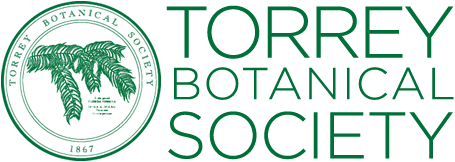Andrew M. Greller is a past president of the Torrey Botanical Society, and a longtime expert on the flora of the New York metropolitan region. Through generous donations to the Society since 2009, Dr. Greller has created an award for graduate student research. In order to honor Dr. Greller, the Society established the Andrew M. Greller Graduate Student Research Award for Conservation of Local Flora and Ecosystems ($1,000 annual award).
Graduate students who are members of the Society and are conducting research on plants, habitats, and/or subjects related to plant conservation in or around (within 100 miles of) New York City are eligible to apply for this award. The award may be applied to the costs of field work and/or laboratory work.
Applications will open on October 15, 2024. The deadline for submissions is February 15, 2025. Applications will be judged by a committee appointed by the Society’s Council. Recipients will be announced in early spring.
Proposals must include:
1) title page with proposal title, applicant’s name, address, and e-mail address;
2) body of the proposal of no more than two pages;
3) literature cited page;
4) budget, including brief justification for each item;
5) a current C.V.; and
6) a letter from the major professor detailing the current status of the applicant and his/her qualifications.
The proposals should be written using Times New Roman font, 12-point, with pages having 1-inch top and bottom margins, and 1.25-inch side margins.
Please send all materials and inquiries to grants@torreybotanical.org.
At the end of the calendar year of support, a report of one paragraph should be sent by the award recipient to the Chair of the Grants and Awards Committee.
Recipients of awards should consider publishing results of the research in the Journal of the Torrey Botanical Society.
Previous awardees
2024
Dusty Russell Prater, University of Tennessee, Knoxville. “Navigating deep time and global change: population dynamics and ecophysiology of a far-flung fern”
2023
Philippa Stone, University of British Columbia . “Phylogenetic relationships, species cirumscription, and the origin of carnivory in Triantha (false asphodel).”
2022
Melina Keighron, North Carolina State University. “The Effects of Climate Change-Induced Wild Bee Pollinator Declines on Plant Fitness”
2021
Cheyenne Moore, University of Pittsburgh. “Understanding invasion mechanisms and ecosystem impacts of invasive knotweed.”
2020
Elisabeth Ward, School of Forestry and Environmental Studies, Yale University. “Legacies of co-occurring invasive plants on soil nutrient availability in disturbed hardwood forests: implications for restoration and management.”
2019
Jo-Marie Kasinak, Department of Marine Sciences, University of Connecticut. “Restored vs. natural living shorelines: Comparison of ecosystem services.”
2018
Kate Douthat, Department of Ecology, Evolution and Natural Resources, Rutgers University. “The plant communities of stormwater detention basins in New Jersey: Potential for conservation of biodiversity in the urban landscape.”
2017
Amy Lou Gage, Rutgers University. “Coastal populations of Prunus serotina: a true NYC ecotype in need of conservation?”
2016
no award given
2015
Lauren J. Frazee, Graduate Program in Ecology and Evolution, Rutgers University. “The diversification and homogenization of Plantago major populations in the New York City area.”
2014
Marlyse C. Duguid, Yale School of Forestry and Environmental Studies & The New York Botanical Garden. “Patterns and drivers of understory plant diversity and composition in northeastern forests.”
2013
Angelica Patterson, Columbia University. “Temperature tolerance of the physiological processes controlling carbon gain in northeastern forests.”
Sarah Whorley, Fordham University. “Algal biodiversity and function used to assess stream restoration in Delaware County, New York.”
2012
no award given
2011
David Waring, Fordham University. “Population Dynamics of Alliaria petiolata (Garlic Mustard) along an Urban-to-rural Gradient.”
2010
Elena Tartaglia, Rutgers University. “Mutualistic interactions in the urban landscape: can we restore specialized plant-pollinator interactions?”
